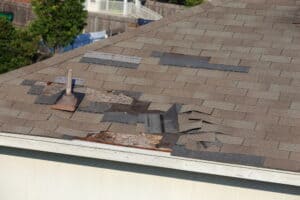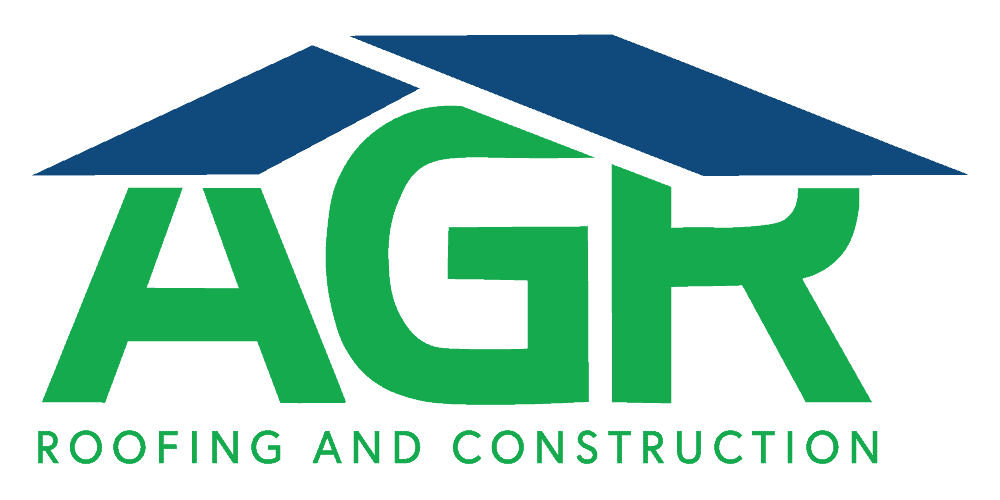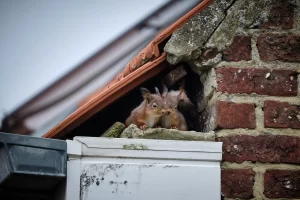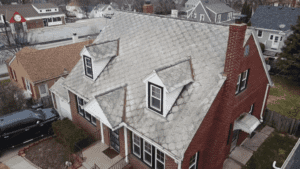Surprisingly, a storm doesn’t have to be severe to result in roof damage. Even storms without heavy rain or hail can compromise your roofing system due to high winds. Wind can weaken areas of your roof and increase your risk for severe roof damage down the line.
It’s true that roofing systems are made to withstand all types of weather conditions, including wind. However, over time, the impact of wind on your roof will stack up and could cause noticeable damage. But, by taking care of roof wind damage promptly, you can avoid costly roof repairs for leakage or other severe issues.
The first step in having roof wind damage repaired is identifying the damage itself. We’ll help you find roof damage after high winds pass over your home so that you can schedule necessary Omaha roof repairs with speed.
How Wind Roof Damage Occurs
In high winds, most people know that there’s a risk for downed power lines, trees, street signs, and similar structures. But, people often don’t expect the high winds to compromise areas of their homes, too. Any exterior structure of your home is at risk for damage, with your roof being a major point of vulnerability.
Wind doesn’t uniformly impact every area of your roof as certain parts are affected more than others. Specifically, the edges and corners of your roof are at a higher risk for damage due to wind. The wind pressure that hits the edge of your roof will be higher than the wind pressure that reaches the center of your roof.

Shingle Damage
When wind hits the edges of your roof, it may loosen the roofing materials and force it upward. In the case of shingles, wind may start to peel your shingles off of your roof. This typically only occurs with roofing systems that are older or otherwise impacted by wear-and-tear. If the shingles are already a bit loose, high winds may easily pull the shingles further away from your roof. This damage may not be significant at first, but could lead to serious issues over time.
If the wind picks up an entire corner of insulation, water can get into your home, causing a leak. The best way to avoid this is to ensure that the perimeter and corners of your roof are strong and secure enough to endure winds at high speeds.
Inspecting For Roof Wind Damage
After a storm with high winds, it’s beneficial to check for wind damage to your roof. Enlist the help of a trusted roofing company to perform a thorough inspection. During the inspection, they’ll check the:
- Shingles
After high winds, your shingles may be left damaged. The type of damage will depend on the material of the shingles.
- Wood shingles
Wood shingles may curl or split from the force of high winds.
- Composite shingles
Composite shingles may lose some of their protective granules. The shingles may also curl, break, or fully rip off of your roof in high winds.
- Flashing
Your roof’s flashing, which is the protective metal used to prevent water damage to your roof, may buckle or tear as a result of high winds.
- Gutters
Your gutter system may show signs of roof wind damage, too. In particular, you may notice that the gutters aren’t as securely attached to your home. High winds can also increase your risk for clogged gutters. In a storm, a clog can cause your gutters to leak and potentially cause water damage to your home.

Dealing With Roof Wind Damage
If your roof has been damaged by wind in any way, prompt repairs are essential. Minor wind damage can turn into a major problem over time. In particular, many types of roof wind damage can escalate into a full roof leak. Roof leakage can lead to water damage throughout your home and may even require a full roof replacement.
Contact AGR Roofing and Construction today for help with your wind-damaged roof in Omaha. Our trained roofing specialists will perform a thorough inspection and ensure that all damage is efficiently repaired.





